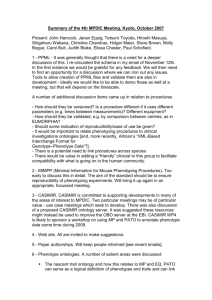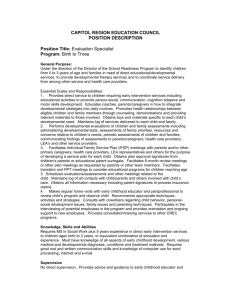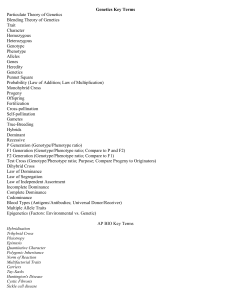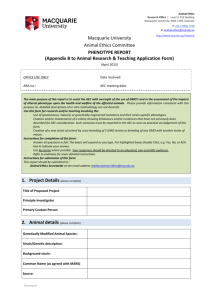Promise of Phenomics
advertisement
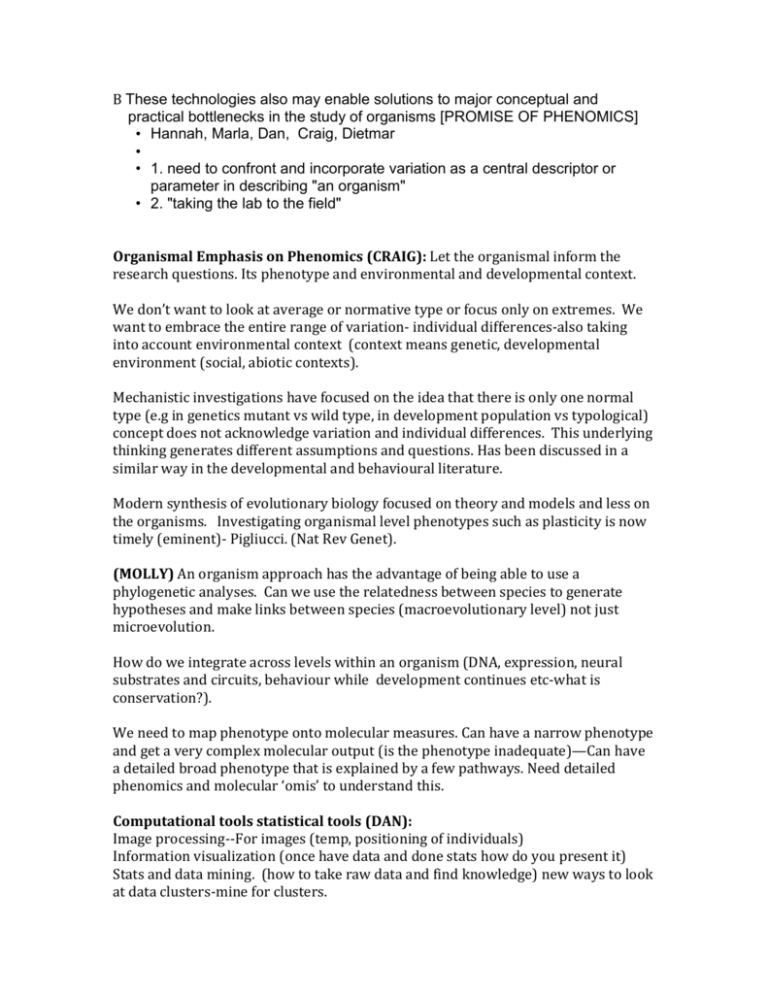
B These technologies also may enable solutions to major conceptual and practical bottlenecks in the study of organisms [PROMISE OF PHENOMICS] • Hannah, Marla, Dan, Craig, Dietmar • • 1. need to confront and incorporate variation as a central descriptor or parameter in describing "an organism" • 2. "taking the lab to the field" Organismal Emphasis on Phenomics (CRAIG): Let the organismal inform the research questions. Its phenotype and environmental and developmental context. We don’t want to look at average or normative type or focus only on extremes. We want to embrace the entire range of variation- individual differences-also taking into account environmental context (context means genetic, developmental environment (social, abiotic contexts). Mechanistic investigations have focused on the idea that there is only one normal type (e.g in genetics mutant vs wild type, in development population vs typological) concept does not acknowledge variation and individual differences. This underlying thinking generates different assumptions and questions. Has been discussed in a similar way in the developmental and behavioural literature. Modern synthesis of evolutionary biology focused on theory and models and less on the organisms. Investigating organismal level phenotypes such as plasticity is now timely (eminent)- Pigliucci. (Nat Rev Genet). (MOLLY) An organism approach has the advantage of being able to use a phylogenetic analyses. Can we use the relatedness between species to generate hypotheses and make links between species (macroevolutionary level) not just microevolution. How do we integrate across levels within an organism (DNA, expression, neural substrates and circuits, behaviour while development continues etc-what is conservation?). We need to map phenotype onto molecular measures. Can have a narrow phenotype and get a very complex molecular output (is the phenotype inadequate)—Can have a detailed broad phenotype that is explained by a few pathways. Need detailed phenomics and molecular ‘omis’ to understand this. Computational tools statistical tools (DAN): Image processing--For images (temp, positioning of individuals) Information visualization (once have data and done stats how do you present it) Stats and data mining. (how to take raw data and find knowledge) new ways to look at data clusters-mine for clusters. Methods data-base for phenotyping in lab and field. (JOV ) investigate what is going on in other systems: like the Physiome-mostly on rats but the idea of the web site may be useful. www.physiome.org, Jim Bassingthwaighte U. Wash. Integrate across levels-issues of scale, multiscale. Through put proteomics-new ways to look at data clusters-mine for clusters. Remote sensing needed (discussed before), geo location techniques, time stamp, multi channel camera-need tools to integrate these things. Camera’s infra red regular, high speed. Lab to Field AND Field to Lab (Molly). Have the tools to look at many individuals (separately) at different temporal and spatial time scales. Can look at the genome, epigenetics, proteome metabolism behaviour, images, anatomical, developmental. Technology is coming to collect this info-a lot more of it and in a lot more detail. Generate hypotheses from the field. Test in a lab-field like setting and in the lab. Manipulate hypothesized variables in the lab-this means varying environment (abiotic, social, developmental). Match phenotype with environmentenvironmental monitoring consider development. High through put phenotyping methods-how immenable are they for breadth vs depth of phenotyping. Have to consider this on a case by case basis. Studies of development in the field would be benefited by the development of methods to age (developmental staging) organisms in the field (fish otoliths). Also ways to measure exposures during life. Study transcriptional changes to developmental through developing molecular markers to help “stage” animals. Existing data bases that we can learn from (Hannah)






